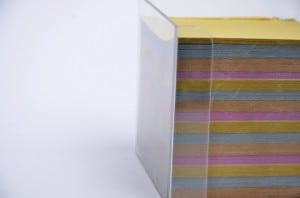When Ts’Ai Lun, a Chinese scholar, first combined used fishing nets, hemp, grass, and dirty rags to make the first version of paper in 105AD, he didn’t realise his invention would change the world. Word about paper, as Lun dubbed it, quickly spread through Asia, eventually reaching Europe where it sparked a revolution.
Paper changed everything – it improved communications, allowed teachings to be passed down from generation to generation, and allowed for history to be documented. Without Lun’s invention, humanity would be in a very different place today.
 Paper making has advanced greatly since Lun’s time. Today, paper is made by combining wood fibres from chopped down trees with glue, bleaching agents, and a number of potent chemicals. Unfortunately, this process causes a great deal of environmental damage, speeding up the effects of climate change and global warming.
Paper making has advanced greatly since Lun’s time. Today, paper is made by combining wood fibres from chopped down trees with glue, bleaching agents, and a number of potent chemicals. Unfortunately, this process causes a great deal of environmental damage, speeding up the effects of climate change and global warming.
Fortunately, a number of scientists and engineers have created ways to re-use old, discarded paper to create new, recycled paper that is more environmentally friendly. This is why companies like papershredding.ie advocate using your shredded papers to create new usable paper.
This article will list 3 ways recycled paper helps the environment.
#1 – Conserves natural resources
Paper making requires a lot of natural resources.
Firstly, large amounts of wood fibres are needed to create virgin paper. These wood fibres are harvested from chopped down trees. Approximately 17-24 trees need to be chopped down to create one tonne of paper.
Secondly, paper making requires a lot of electricity. Creating this electricity requires fossil fuels to be burned, leading to large amounts of toxic greenhouse gases being released into the atmosphere.
Finally, paper making requires large amounts of water to be mixed with bleach and other chemicals. This process pollutes the water, creating toxic byproducts like sludge and sulphur, which, in turn, can pollute and damage water supplies.
Making recycled paper requires significantly fewer natural resources.
Unlike virgin paper, recycled paper is made from already processed wood fibres from old, discarded paper. According to the United States Environmental Protection Agency, every tonne of recycled paper made saves 17 trees from being chopped down.
Secondly, making recycled paper uses up to 40% less electricity than making virgin paper, leading to lesser amounts of toxic greenhouse gases being released into the atmosphere.
Finally, making recycled paper requires significantly less water than making virgin paper. On average, making a tonne of recycled paper requires 7,000 fewer gallons of water than making a tonne of virgin paper. Making recycled paper produces fewer polluting byproducts, too.
#2 – Reduces the amount of methane being released into the environment
Methane is a very potent, very toxic greenhouse gas. It is one of the main gases responsible for causing global warming and the greenhouse effect.
Decomposing paper releases large amounts of methane into the atmosphere, increasing the effects of the greenhouse effect. By recycling this paper instead of leaving it to rot, lesser amounts of methane is released into the atmosphere, slowing the effects of global warming and the greenhouse effect.
#3 – Keeps landfill space free for other types of non-recyclable trash
According to experts in the landfill industry, approximately 30% of landfill space is taken up by waste paper. This is space that could be used to store other non-recyclable materials instead.
Recycling paper helps to keep landfill sites free of waste paper, leaving more room to safely store non-recyclable waste.
Summing Up
Recycling paper can help protect future generations from the effects of global warming and the greenhouse effect. It requires little effort, yet makes a huge difference. Set up paper recycling bins in your workplace and at your home, and start using recycling bins regularly. It’ll help a lot in the long run.
